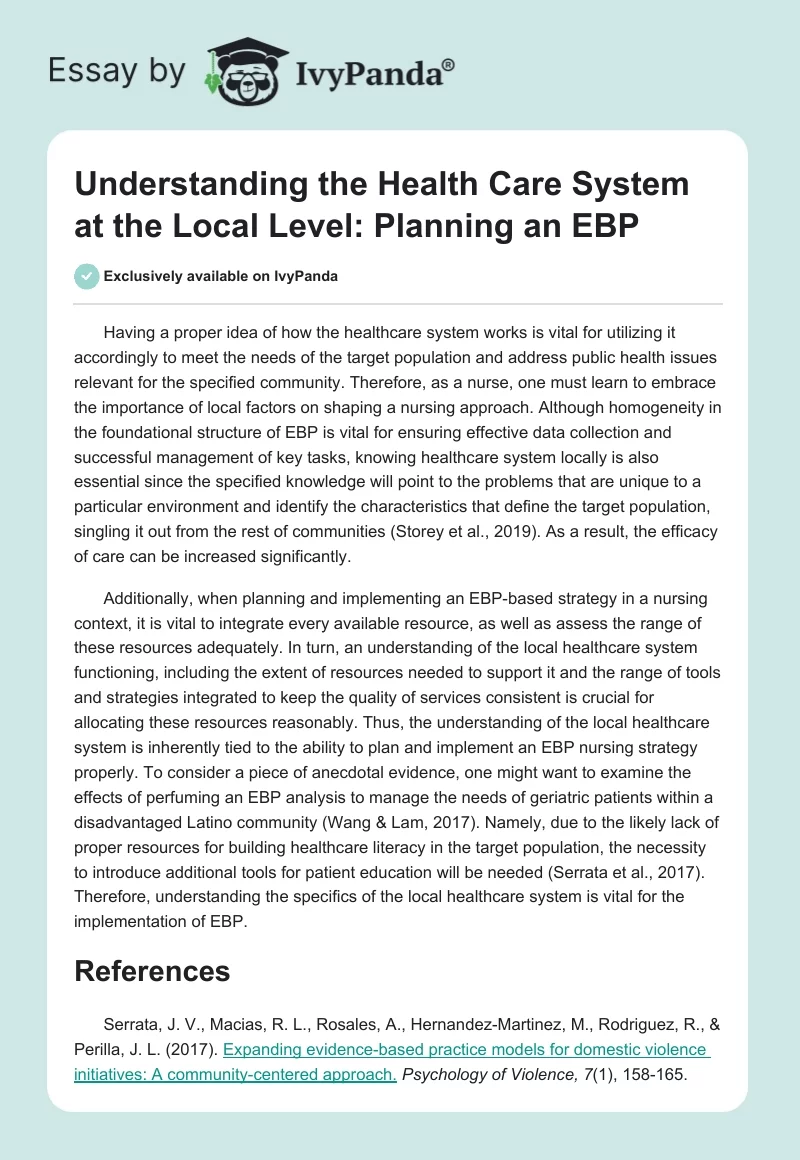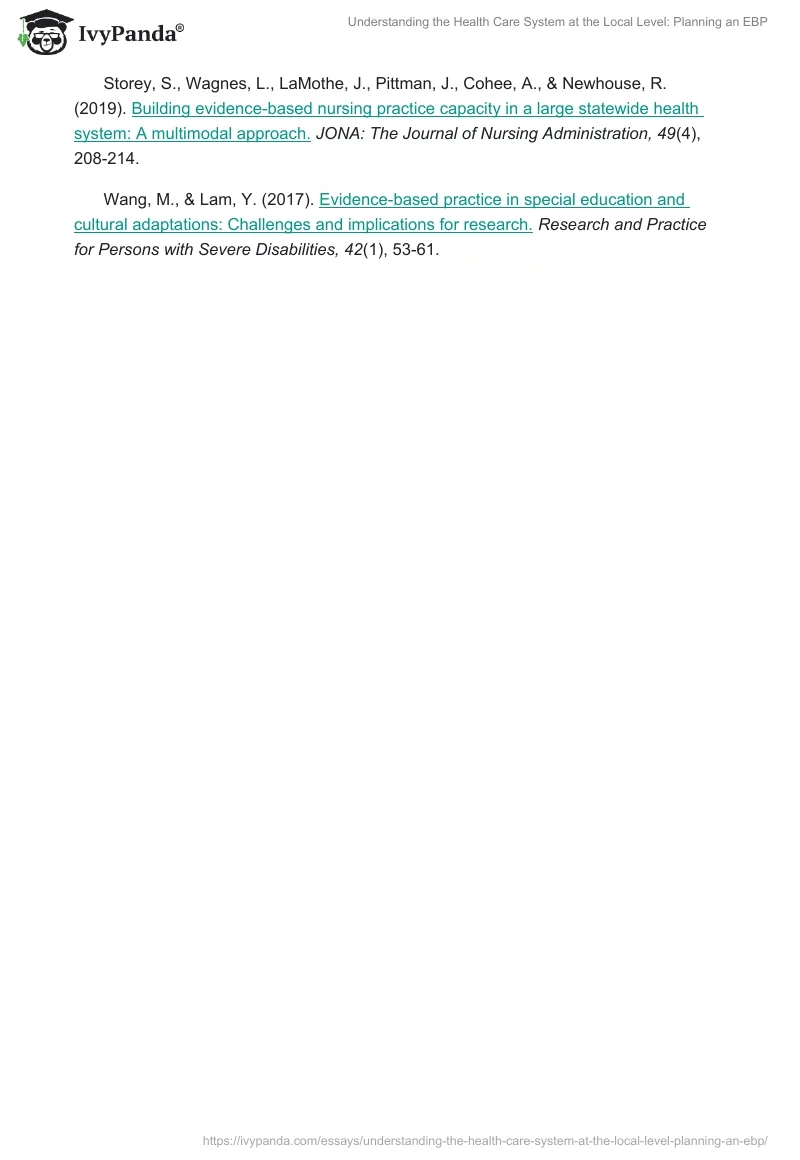Having a proper idea of how the healthcare system works is vital for utilizing it accordingly to meet the needs of the target population and address public health issues relevant for the specified community. Therefore, as a nurse, one must learn to embrace the importance of local factors on shaping a nursing approach. Although homogeneity in the foundational structure of EBP is vital for ensuring effective data collection and successful management of key tasks, knowing healthcare system locally is also essential since the specified knowledge will point to the problems that are unique to a particular environment and identify the characteristics that define the target population, singling it out from the rest of communities (Storey et al., 2019). As a result, the efficacy of care can be increased significantly.
Additionally, when planning and implementing an EBP-based strategy in a nursing context, it is vital to integrate every available resource, as well as assess the range of these resources adequately. In turn, an understanding of the local healthcare system functioning, including the extent of resources needed to support it and the range of tools and strategies integrated to keep the quality of services consistent is crucial for allocating these resources reasonably. Thus, the understanding of the local healthcare system is inherently tied to the ability to plan and implement an EBP nursing strategy properly. To consider a piece of anecdotal evidence, one might want to examine the effects of perfuming an EBP analysis to manage the needs of geriatric patients within a disadvantaged Latino community (Wang & Lam, 2017). Namely, due to the likely lack of proper resources for building healthcare literacy in the target population, the necessity to introduce additional tools for patient education will be needed (Serrata et al., 2017). Therefore, understanding the specifics of the local healthcare system is vital for the implementation of EBP.
References
Serrata, J. V., Macias, R. L., Rosales, A., Hernandez-Martinez, M., Rodriguez, R., & Perilla, J. L. (2017). Expanding evidence-based practice models for domestic violence initiatives: A community-centered approach.Psychology of Violence, 7(1), 158-165.
Storey, S., Wagnes, L., LaMothe, J., Pittman, J., Cohee, A., & Newhouse, R. (2019). Building evidence-based nursing practice capacity in a large statewide health system: A multimodal approach.JONA: The Journal of Nursing Administration, 49(4), 208-214.
Wang, M., & Lam, Y. (2017). Evidence-based practice in special education and cultural adaptations: Challenges and implications for research.Research and Practice for Persons with Severe Disabilities, 42(1), 53-61.


